
On the evening of February 1, 1991, USAir Flight 1493, a Boeing 737-300, collided with SkyWest Airlines Flight 5569, a Fairchild Swearingen Metroliner turboprop aircraft, upon landing at Los Angeles International Airport (LAX). As Flight 1493 was on final approach, the local controller was distracted, though air traffic was not heavy at LAX, by a series of abnormalities, including a misplaced flight progress strip and an aircraft that had inadvertently switched off the tower frequency. The SkyWest flight was told to taxi into takeoff position, while the USAir flight was landing on the same runway.

USAir Flight 405 was a regularly scheduled domestic passenger flight between LaGuardia Airport in Queens, New York City, New York, and Cleveland, Ohio. On March 22, 1992, a USAir Fokker F28, registration N485US, flying the route, crashed in poor weather in a partially inverted position in Flushing Bay, shortly after liftoff from LaGuardia. The undercarriage lifted off from the runway, but the airplane failed to gain lift, flying only several meters above the ground. The aircraft then veered off the runway and hit several obstructions before coming to rest in Flushing Bay, just beyond the end of the runway. Of the 51 people on board, 27 were killed, including the captain and a member of the cabin crew.
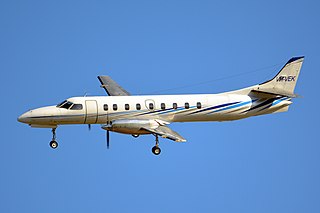
The Fairchild Swearingen Metroliner is a 19-seat, pressurized, twin-turboprop airliner first produced by Swearingen Aircraft and later by Fairchild Aircraft at a plant in San Antonio, Texas.
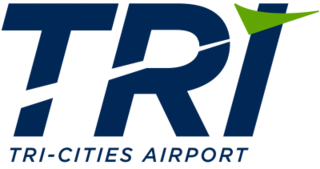
Tri-Cities Airport, is in Blountville, Tennessee, United States. It serves the Tri-Cities area of Northeast Tennessee and Southwest Virginia. The airport is governed by the Tri-Cities Airport Authority (TCAA) whose members are appointed by the cities of Johnson City, Kingsport, Bristol (TN), Bristol (VA) and both Washington and Sullivan counties in Tennessee.

TACA Flight 110 was a scheduled international airline flight operated by TACA International Airlines, traveling from San Salvador to New Orleans, with a stopover in Belize City. On May 24, 1988, the flight encountered severe thunderstorm activity on its final approach to New Orleans International Airport. As a result, the brand new Boeing 737-300 suffered flameout in both engines while descending through a severe thunderstorm, but the pilots made a successful emergency landing on a grass levee adjacent to NASA's Michoud Assembly Facility, with no one aboard sustaining more than a few minor injuries, and with only minor hail damage to the intact aircraft. Following an on-site engine replacement, the jetliner took off from Saturn Boulevard, a road which had previously been an aircraft runway at Michoud. The aircraft was subsequently repaired and returned to service until it finally retired in 2016.

Grand Aire Express was an American airline based in Swanton, Ohio, US. It operated passenger and cargo charter services worldwide, as well as charter management services. Its main base began in Monroe, Michigan and then moved to Toledo Express Airport, Toledo, Ohio. with additional bases in Louisville, KY and El Paso, TX. Grand Aire Express closed down/disestablished in June 2003; however, the parent company Grand Aire Inc., is still in operation, providing On-Demand Air Charter and FBO services from their world-headquarters at the Toledo Express Airport in Swanton, Ohio.
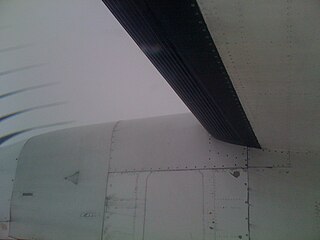
A deicing boot is a type of ice protection system installed on aircraft surfaces to permit a mechanical deicing in flight. Such boots are generally installed on the leading edges of wings and control surfaces as these areas are most likely to accumulate ice which could severely affect the aircraft's performance.
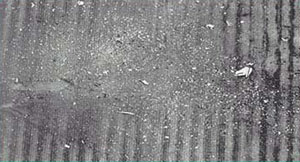
American Eagle Flight 4184, officially operating as Simmons Airlines Flight 4184, was a scheduled domestic passenger flight from Indianapolis, Indiana, to Chicago, Illinois, United States. On October 31, 1994, the ATR 72 performing this route flew into severe icing conditions, lost control and crashed into a field. All 68 people aboard were killed in the high-speed impact.

In aeronautics, ice protection systems keep atmospheric moisture from accumulating on aircraft surfaces, such as wings, propellers, rotor blades, engine intakes, and environmental control intakes. Ice buildup can change the shape of airfoils and flight control surfaces, degrading control and handling characteristics as well as performance. An anti-icing, de-icing, or ice protection system either prevents formation of ice, or enables the aircraft to shed the ice before it becomes dangerous.
Taos Regional Airport is a public use airport eight nautical miles (15 km) northwest of the central business district of Taos, in Taos County, New Mexico, United States. It is owned by the Town of Taos. FAA's National Plan of Integrated Airport Systems for 2009–2013 classifies it as a general aviation airport.

Mohawk Airlines Flight 405, a Fairchild Hiller FH-227 twin-engine turboprop airliner registered N7818M, was a domestic scheduled passenger flight operated by Mohawk Airlines that crashed into a house within the city limits of Albany, New York, on March 3, 1972, on final approach to Albany County Airport, New York, killing 17 people. The intended destination airport lies in the suburban Town of Colonie, about 4 miles north of the crash site.
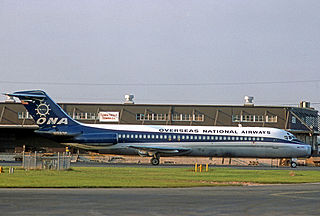
ALM Antillean Airlines Flight 980 was a flight scheduled to fly from John F. Kennedy International Airport in New York City to Princess Juliana International Airport in St. Maarten, Netherlands Antilles, on May 2, 1970. After several unsuccessful landing attempts, the aircraft's fuel was exhausted, and it made a forced water landing in the Caribbean Sea 48 km off St. Croix, with 23 fatalities and 40 survivors. The accident is one of a small number of intentional water ditchings of jet airliners.

The Swearingen Merlin or the Fairchild Aerospace Merlin is a pressurized, twin turboprop business aircraft first produced by Swearingen Aircraft, and later by Fairchild at a plant in San Antonio, Texas.

The British Aerospace Jetstream is a small twin turboprop airliner, with a pressurised fuselage, developed as the Jetstream 31 from the earlier Handley Page Jetstream. A larger version of the Jetstream was also manufactured, the British Aerospace Jetstream 41.
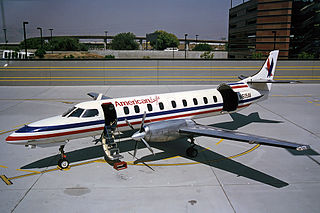
AVAir Flight 3378, was a scheduled flight under the American Eagle branding from Raleigh–Durham International Airport to Richmond International Airport which crashed after takeoff from Raleigh-Durham International Airport late on the night of February 19, 1988. All 12 people on board were killed in the accident.

Trans-Colorado Airlines Flight 2286 was a scheduled domestic passenger flight from Denver, Colorado, to Durango, Colorado, operated for Continental Express by Trans-Colorado Airlines. On January 19, 1988, Flight 2286 crashed onto terrain near Bayfield, Colorado, while on approach to Durango-La Plata County Airport. Out of the seventeen people on board, nine were killed, including both crew members.

On 24 October 2016, a twin turboprop Fairchild SA227-AT Merlin IVC operated by CAE Aviation crashed near Kirkop, Malta, shortly after take-off from Malta International Airport. The aircraft was to operate in the vicinity of Misrata in Libya on a surveillance mission by the French Ministry of Defence. All five people on board the aircraft died in the crash, making it the deadliest aviation accident in Malta since 1975.
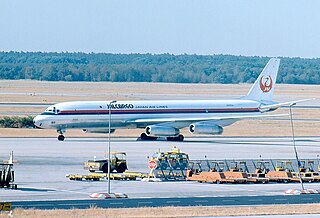
Japan Air Lines Cargo Flight 1045 was a charter flight on January 13, 1977, from Grant County, Washington, to Tokyo, Japan, with a stopover in Anchorage, Alaska. The flight crashed during the initial climb shortly after takeoff from Anchorage, in part because the captain, Hugh L. Marsh, was intoxicated as shown by a blood alcohol level of 0.29; the co-pilot and the other crew were not impaired. All of those on board, including three flight crew members, were killed in the crash.

Ryan International Airlines Flight 590 was a cargo flight carrying mail for the United States Postal Service from Greater Buffalo International Airport (BUF) in Buffalo, New York, to Indianapolis International Airport (IND) in Indiana, with a stopover at Cleveland Hopkins International Airport (CLE) in Cleveland, Ohio. On February 17, 1991, the McDonnell Douglas DC-9-15RC operating the flight crashed on takeoff from Cleveland during icing conditions. Both pilots, the aircraft's only occupants, were killed. The National Transportation Safety Board (NTSB) determined that the causes of the crash were the flight crew failing to deice their aircraft, and the inexperience of the Federal Aviation Administration (FAA), McDonnell Douglas, and Ryan International Airlines with icing condition on DC-9-10 aircraft.

Flightline Flight 101 was an international flight from Barcelona El-Prat Airport in Barcelona, Spain to Ahmed Ben Bella Airport in Oran, Algeria. It crashed into the sea, probably due to a lightning strike leading to a loss of electricity.



















